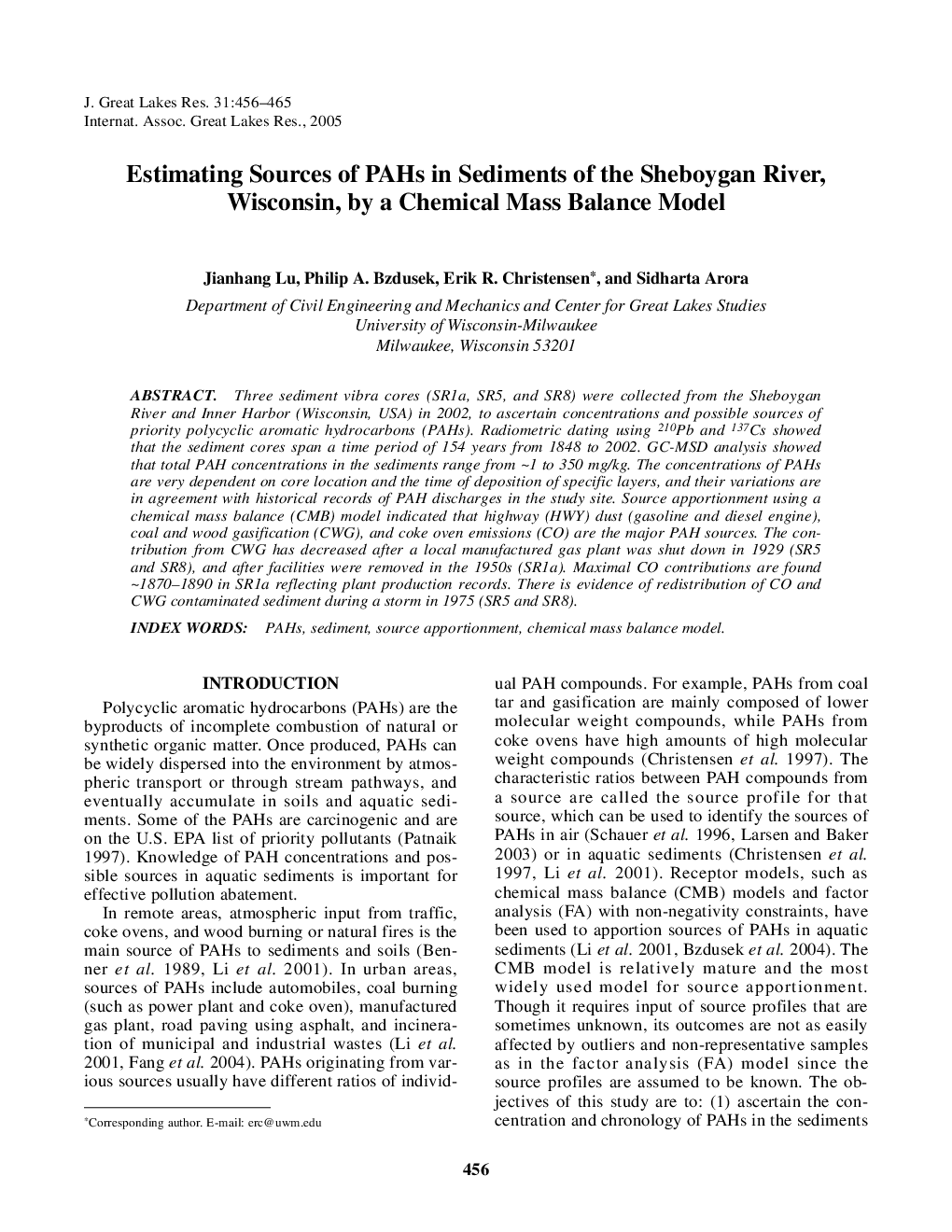| Article ID | Journal | Published Year | Pages | File Type |
|---|---|---|---|---|
| 9450141 | Journal of Great Lakes Research | 2005 | 10 Pages |
Abstract
Three sediment vibra cores (SR1a, SR5, and SR8) were collected from the Sheboygan River and Inner Harbor (Wisconsin, USA) in 2002, to ascertain concentrations and possible sources of priority polycyclic aromatic hydrocarbons (PAHs). Radiometric dating using 210Pb and 137Cs showed that the sediment cores span a time period of 154 years from 1848 to 2002. GC-MSD analysis showed that total PAH concentrations in the sediments range from â¼1 to 350 mg/kg. The concentrations of PAHs are very dependent on core location and the time of deposition of specific layers, and their variations are in agreement with historical records of PAH discharges in the study site. Source apportionment using a chemical mass balance (CMB) model indicated that highway (HWY) dust (gasoline and diesel engine), coal and wood gasification (CWG), and coke oven emissions (CO) are the major PAH sources. The contribution from CWG has decreased after a local manufactured gas plant was shut down in 1929 (SR5 and SR8), and after facilities were removed in the 1950s (SR1a). Maximal CO contributions are found â¼1870-1890 in SR1a reflecting plant production records. There is evidence of redistribution of CO and CWG contaminated sediment during a storm in 1975 (SR5 and SR8).
Related Topics
Physical Sciences and Engineering
Earth and Planetary Sciences
Earth and Planetary Sciences (General)
Authors
Jianhang Lu, Philip A. Bzdusek, Erik R. Christensen, Sidharta Arora,
